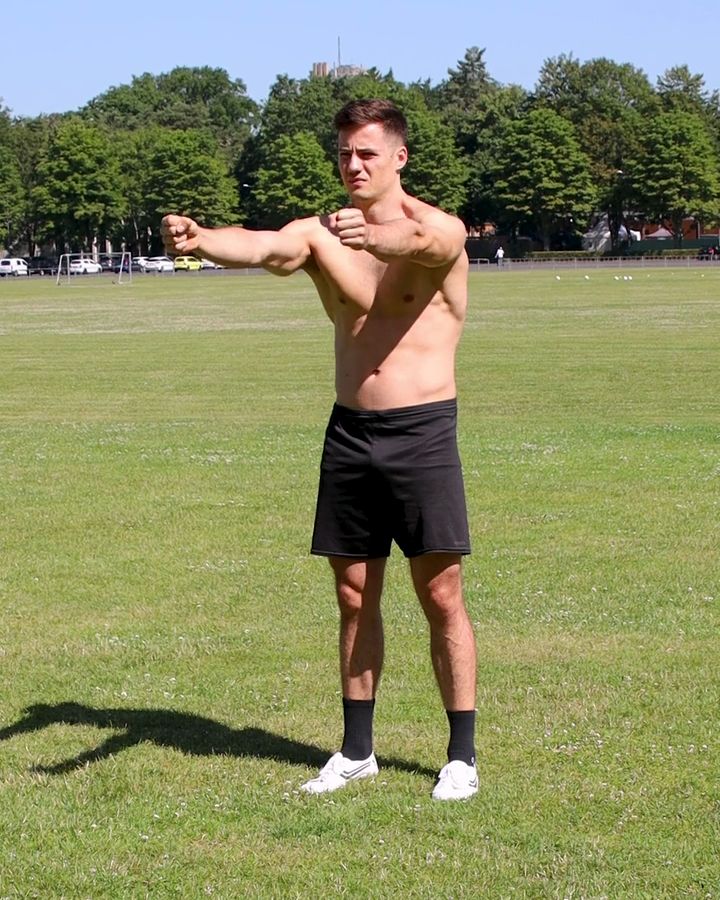Elevation Depression
Elevation and depression refer to the upward and downward movement of the shoulder blades and are an effective exercise for strengthening the muscles around the shoulders and upper back. During elevation, the shoulder blades are pulled upwards, while during depression, they are actively pressed downwards. These movements primarily work the trapezius and rhomboid muscles.
Elevation and depression can be integrated into various exercises, such as pull-ups or dips, to improve shoulder control and stability.
Elevation Depression - the correct execution
- Start from standing position
- Keep your arms stretched upwards
- Pull your shoulders down (depression)
- Pull your shoulders up towards your ears (elevation)
The exercise Elevation Depression is intended to be used as a technique, warm up exercise.
Which muscles are trained by Elevation Depression?






Secondary trained muscles for Elevation Depression
Side Delts - The lateral part of the deltoid muscle, also known as the lateral shoulder, is located on the outside of the shoulder. It is the main muscle responsible for lifting the arm sideways. The lateral shoulder is particularly active when the arm is extended away from the body, such as during lateral raises or lifting objects to the side. It plays a key role in arm abduction and shoulder stabilization.
Neck - The neck muscles move your head in all directions and support important structures such as blood vessels and nerves that run between your head and chest.
This could also be interesting

Calisthenics Body Transformation – How to Build a Strong, Lean, and Athletic Physique
Transform your body with Calisthenics! Build muscle, burn fat & achieve a shredded physique with bodyweight training. See real before & after results!

The Best Fitness Apps in 2025: Our Top 10 Recommendations
Don’t miss the best fitness apps of 2025: surprising favorites, free options, and perfect tools for your workouts. Find the ideal app today!

Complete Calisthenics Skills List – 40+ Exercises from Beginner to Pro
Which calisthenics skills should you learn first? And which ones will really help you progress? In this article, you’ll find a complete list of over 40 exercises – from the very basics to the toughest moves for professionals. Each exercise comes with instructions, so you can immediately integrate them into your training.



